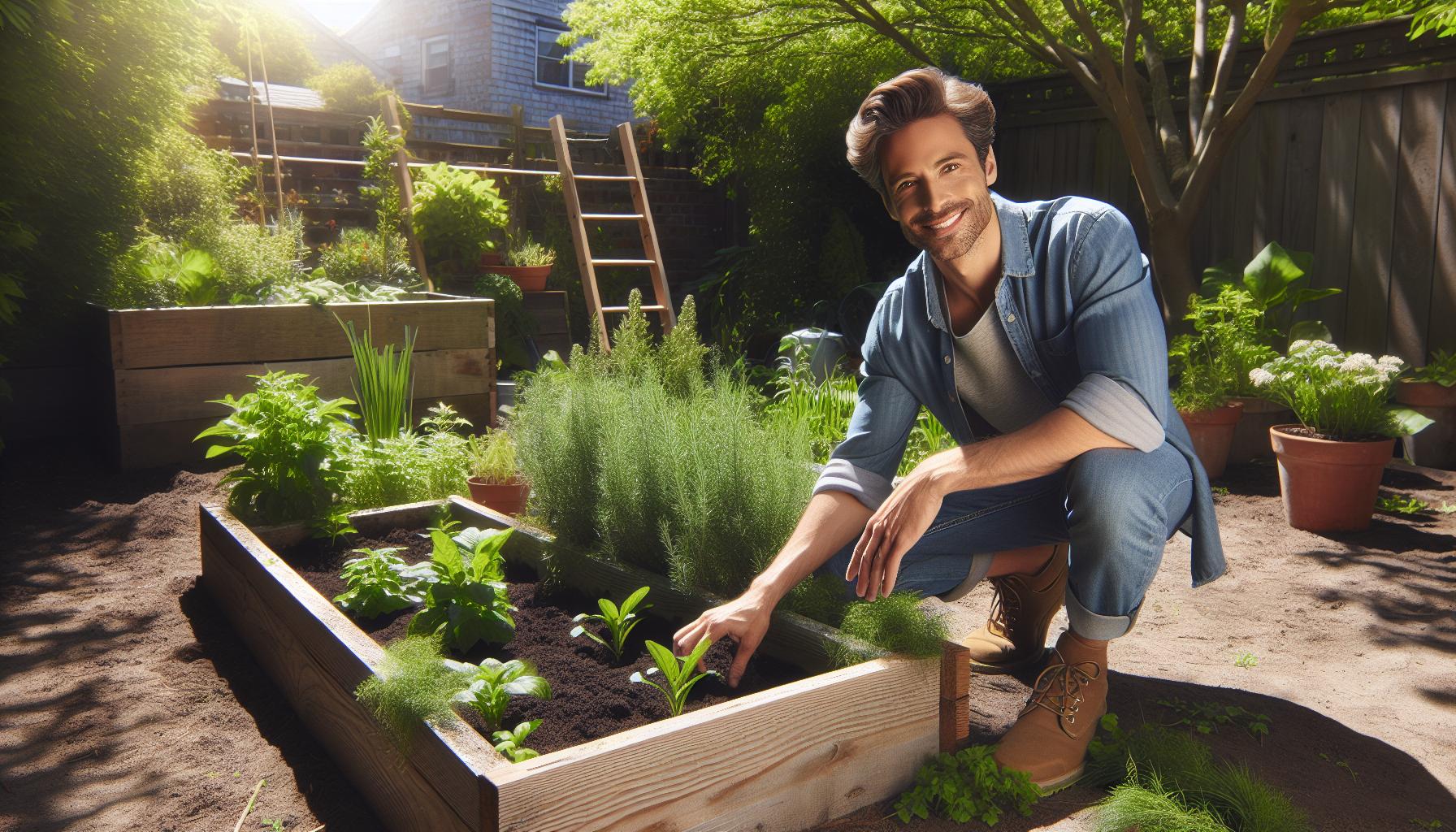In today’s fast-paced world, finding ways to stretch a dollar is more important than ever. That’s where DIY projects come in. Not only do they offer a creative outlet, but they also provide practical solutions to everyday problems without breaking the bank. Whether it’s sprucing up your living space or tackling necessary repairs, DIY projects can be a game-changer for your budget.
I’ve discovered that these projects aren’t just about saving money—they’re about empowerment. When you take on a DIY task, you’re not only cutting costs but also gaining valuable skills and a sense of accomplishment. From repurposing old furniture to creating homemade cleaning products, the possibilities are endless. And the best part? You can tailor each project to suit your style and needs, ensuring that every penny spent is truly worthwhile. So, let’s dive into some of the most effective DIY projects that can help you save money while unleashing your inner creativity.
Key Takeaways
- Cost-Efficiency: DIY projects help save money by eliminating labor costs and allowing the use of affordable materials, repurposing items, and avoiding spending on new products.
- Skill Development: Engaging in DIY tasks enhances resourcefulness and empowers individuals with practical skills that can be valuable for future projects and repairs.
- Sustainability: Many DIY projects encourage the use of recycled materials, reducing waste and promoting an eco-friendly approach to home improvements and personal creations.
- Personalization: DIY projects offer the freedom to tailor creations to personal styles and needs, resulting in unique and customized solutions that mass-produced items can’t offer.
- Home and Garden Improvement: Specific DIY projects like painting walls, installing new fixtures, upcycling furniture, and building raised garden beds provide affordable ways to enhance home and garden spaces.
- Budget-Friendly Tips: Sourcing discounted materials and investing in essential tools contribute to cost-effective DIY endeavors, offering ways to start projects without significant financial outlay.
DIY Projects to Save Money
DIY projects offer several compelling reasons for anyone looking to cut costs effectively. Completing tasks yourself eliminates the labor expenses associated with hiring professionals. Repurposing and fixing existing items often leads to substantial savings compared to buying new ones. I find that building skills increases resourcefulness, enabling the resolution of future issues without additional costs. With DIY, there’s flexibility to choose affordable materials, which can further reduce overall expenses.

Undertaking DIY projects fosters a sustainable approach by encouraging the use of recycled materials and reducing waste. Constructing homemade cleaning products from everyday ingredients not only saves money but also ensures a healthier home environment. Customizing projects to fit specific needs and preferences allows for cost-efficient personalization that can’t be found in mass-produced items.
Additionally, experts like HomeAdvisor highlight that homeowners can save up to 50% on renovation costs by doing certain tasks themselves. This potential for significant savings makes DIY an attractive option for budget-conscious individuals. Engaging in DIY projects also creates a sense of satisfaction and accomplishment, boosting morale and promoting a positive mindset toward personal finance.
Home Improvement DIY Projects
Saving money on home improvements is possible when tackling some tasks myself. DIY projects not only cut costs but also allow me to customize my home to my liking.
Painting Walls
Painting walls perfects a straightforward DIY project, offering a significant aesthetic upgrade without substantial costs. I choose high-quality paint that fits my budget and use essential tools like brushes, rollers, and painter’s tape for clean edges. When selecting colors, I consider how they complement existing decor, knowing that lighter hues can make spaces feel larger. With proper surface preparation, which involves cleaning and patching walls, I achieve a smooth, professional finish.
Installing New Fixtures
Installing new fixtures like light fittings or faucets refreshes a space without a hefty price tag. I start by ensuring I have the right tools, such as screwdrivers, pliers, and a wrench, and familiarize myself with the manufacturer’s instructions. When working with electrics, I turn off the power to avoid safety hazards. Choosing fixtures that match my home’s style enhances overall ambiance. With careful installation, I not only upgrade my space but also gain confidence in handling future projects.
DIY Craft Projects
Tackling DIY crafts offers a creative outlet, adding personalized touches while keeping expenses in check. Let’s explore two impactful projects that blend creativity with financial savvy.
Upcycling Old Furniture

Giving new life to old furniture not only saves money but also reduces waste. Start by assessing the condition of existing pieces like tables, chairs, or dressers. Sanding surfaces smooths out imperfections, and a fresh coat of paint creates a modern look.
On-trend colors like matte black or pastel shades make pieces stand out. Replacing hardware is a simple way to enhance a piece’s character; for example, swapping out old knobs for contemporary designs revitalizes dressers or cabinets. Materials like paint and hardware are budget-friendly and often available at local home improvement stores.
Creating Homemade Decor
Homemade decor adds warmth and uniqueness to any space without breaking the bank. Wall art crafted from canvas and acrylic paints brings personality to rooms without high costs. Stencils and tape help create geometric patterns or landscapes. Additionally, fabric remnants make excellent cushion covers, keeping sewing simple with basic stitch techniques. Mason jars offer versatile decor matching any theme — enhance them with paint, ribbons, or lighting elements for effect. Materials for these projects often exist in household supplies or can be purchased inexpensively online.
Garden DIY Projects
Garden DIY projects offer a practical way to cut costs while enhancing outdoor spaces. These projects not only reduce expenses but also promote sustainability and self-reliance.
Building Raised Garden Beds

Raised garden beds simplify gardening and save money by using fewer resources. I start by selecting reclaimed wood or recycled materials, which keeps costs low and supports sustainability. Constructing the frame proves easy, requiring only basic tools like a saw, drill, and screws.
I position the beds in an area with optimal sunlight and fill them with soil rich in nutrients, often mixing in compost from my kitchen scraps. This approach ensures plants thrive without the need for expensive fertilizers or pesticides. Raised beds also improve drainage and extend the planting season, leading to higher yields.
Composting at Home
Composting transforms kitchen scraps into valuable garden nutrients, reducing waste and cutting costs on soil amendments. I choose a designated spot in my backyard for a compost bin, opting for a simple DIY version using pallets or a plastic container. Maintaining a balance of greens and browns (like food waste and dried leaves) is key for effective decomposition. I turn the pile every few weeks to aerate it, accelerating the composting process. The resulting compost enriches my garden soil, eliminates dependency on store-bought fertilizers, and contributes to an eco-friendly lifestyle.
Budget-Friendly DIY Tips
Finding ways to cut costs while enhancing skills can make a significant impact on personal finances. Here are some budget-friendly tips to help start DIY projects without breaking the bank.
Sourcing Materials
Affordable, quality materials form the foundation of successful DIY projects. Local thrift stores often have furniture that can be transformed with minimal effort, while salvage yards offer supplies like reclaimed wood and tiles. Online marketplaces, such as Craigslist and Facebook Marketplace, provide another avenue for acquiring materials without large expenses. Freecycled items also contribute to reducing waste and preserving resources. Moreover, some materials, like fabrics and paints, can be bought in bulk from discount stores to save on costs while ensuring there’s enough stock for multiple projects.
Essential Tools to Invest In
Investing in essential tools pays dividends in DIY endeavors. A reliable toolkit should include a hammer, a set of screwdrivers, an adjustable wrench, and a tape measure, ensuring readiness for varied projects. Power tools, such as a drill and a saw, offer greater efficiency for more extensive tasks. Purchasing tools second-hand or opting for budget brands without compromising quality can keep initial expenses low. Investing in multi-purpose tools adds versatility, allowing for a wide range of tasks to be completed without buying additional equipment. With these tools, tackling projects becomes not only feasible but also enjoyable.
Embracing DIY projects is a smart strategy for saving money and boosting creativity. By tackling tasks like home improvements, craft projects, and gardening, we not only cut costs but also gain valuable skills and a sense of achievement. The ability to customize projects ensures our spaces reflect our unique style without breaking the bank. Plus, sourcing materials affordably and investing in essential tools makes DIY endeavors even more budget-friendly. Ultimately, DIY projects empower us to take control of our finances and our environment, fostering a mindset of resourcefulness and sustainability. Let’s continue exploring the endless possibilities of DIY to enrich our lives and wallets.



